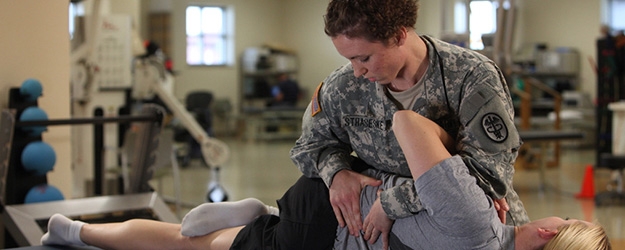Stand Tall
By definition, chiropractic care encourages your body to heal itself by bringing it back into alignment. And by doing your part, you can make the lifestyle changes that prevent the conditions that brought you to the doctor of chiropractic in the first place.

Eat better. Become more active. And, in keeping with the Foundation for Chiropractic Progress’ theme for May, practice good posture.
In olden days, proper young ladies would walk for hours balancing books on their heads, perfecting their posture. But times change and, with technology keeping us hunched over our laptop for hours on end and continually checking our mobile devices, we’ve lost our natural curve.
Whether you call it tech neck or millennial hunchback or a pain in the neck, doctors of chiropractic are seeing it show up on younger people these days, and it raises more than aesthetic concerns.
Poor posture leading to postural kyphosis can bring on back and neck pain, poor circulation, shallow breathing, fatigue, muscle tension, headaches and premature aging of the spine. Among the middle-aged and elderly, studies show it increases the risk of falling. But here’s the good news; chiropractic care, including spinal manipulation, can improve your posture and so much more:
• By allowing more room for your lungs and diaphragm to expand, you can optimize your breathing and circulation.
• Keeping your bones and joints in correct alignment allows your muscles to be used as they were meant to be, properly and efficiently. It also reduces the abnormal wearing of joint surfaces – think knees – that can lead to degenerative diseases.
• You’ll decrease stress on soft tissues, too, giving ligaments, muscles, tendons and discs a welcome break. Additionally, your spine won’t become fixed in an abnormal position.
• Finally, it boosts your mental well-being, boosting your mood and simply making you feel good about yourself.
What can you do to help? Here are a few ideas:
• Get rid of the slouch. Use the 90/90 rule when sitting in a chair, keeping your elbows and knees at 90-degree angles. Hold your mobile devices at eye level when checking your messages. And whether you’re working at your desk or watching television from the couch, take a few minutes each hour to limber up.
• Scrap the high heels or at least reserve them for special occasions. The same with heavy handbags and over-filled backpacks, notorious for pulling your body in unhealthy directions.
• When sitting at your desk, keep your head and neck aligned above your shoulders. Put your feet flat on the floor and your back against the back of the chair.
As a study proved, the best results come from a collaborative effort. In this particular case, 30 women between the ages of 20 and 39 were divided into three groups and each was taught how to sit and stand correctly. The first group received spinal manipulative therapy on restricted thoracic spine segments; the second, the therapy as well as stretch and strengthening exercises and the third, stretch and strengthening exercises alone.
All improved their posture, but the second group saw the best results and decreased their curvature of the spine. Where do you stand? It’s up to you!









































